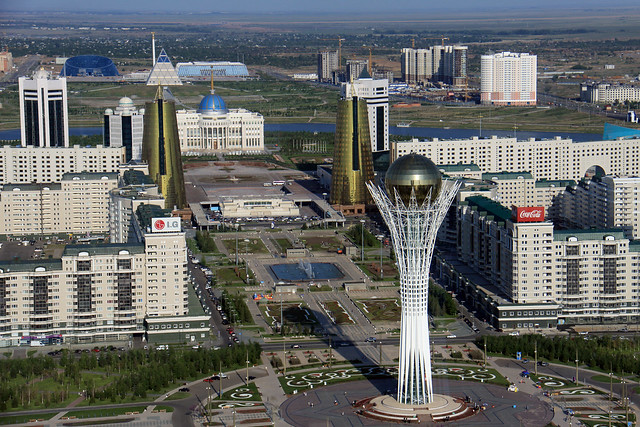Economy
Recent Economic Developments
In 2024, Kazakhstan's GDP grew by 4.8%, driven by strong consumer spending and investment. Retail spending accelerated to 9.1% year-on-year (YoY) in real terms, up from 7.9% in 2023, supported by a 14.1% rise in consumer loans and a 1.9 % increase in real income. Investment expanded by 7.5% in real terms, buoyed by a strong housing market, although foreign direct investment (FDI) inflows declined.
On the supply side, industrial production grew by 2.8% in 2024, compared to 4.4% in 2023, hindered by a 2.7% decline in oil output. The services sector saw a 4.7 % increase, slightly down from 5.2% in 2023. Unemployment remained steady at 4.6%, and the government raised the minimum wage by 21.4% in nominal terms, contributing to a reduction in the poverty rate to 7.0% ($6.85/day).
Inflation eased to 8.6% by the end of 2024 but rose to 9.4% in February 2025 following utility price hikes, exceeding the National Bank’s 5% target. Consequently, the policy rate was raised by 125 basis points to 16.5% in March 2025. The current account deficit narrowed to 1.5% of GDP in 2024 from -3.3% in 2023, reflecting lower FDI profit repatriation. National Bank reserves grew to $45.8 billion, covering seven months of imports. The tenge depreciated by 13.5% against the US dollar during 2024 but partially recovered in early 2025.
Fiscal policy shifted to an expansionary stance in 2024, pushing the deficit up to 3.7% of GDP from 1.6% in 2023, driven by weaker oil revenues. Government debt climbed to 23.7% of GDP, with debt service reaching a historic high of 1.6% of GDP. Real bank lending expanded by 11.7% YoY, with household borrowing accounting for three-quarters of this growth. The household debt-to-wage ratio at 49% in 2024 surpassed levels seen during the 2008–2009 global banking crisis. The banking sector enjoyed record profitability, with return on equity rising to 32.8% in 2024.
Economic Outlook
In 2025, Kazakhstan's economic growth is projected to moderate to 4.5%, supported by a one-off increase in oil production and further fiscal stimulus, before slowing towards its 3.5% growth potential. Household spending is expected to remain resilient, bolstered by social transfers and steady consumer borrowing. Exports are anticipated to expand, driven by strong crude oil shipments.
Inflation is set to rise in 2025, fueled by increases in utility and fuel prices due to subsidy reductions, along with a VAT hike. This inflationary pressure is expected to persist, keeping inflation above the National Bank's target beyond 2027. The positive output gap, estimated to widen in 2025, will also contribute to sustained inflationary pressures.
Declining oil prices and ongoing outflows of investment income from FDI in the mining sector are expected to widen the current account deficit, averaging 2.6% of GDP during the 2025–2027 period. Fiscal policy is likely to remain expansionary, with the deficit projected at 3.6% of GDP in 2025. While the new Tax Code is expected to boost non-oil revenues over time, this will be partially offset by lower oil-related receipts. The government is expected to rely on increased domestic borrowing and further drawdowns from its National Oil Fund to bridge the gap. Spending on social programs and infrastructure will remain a priority in the government's 2025–2027 fiscal plan.
The poverty rate is projected to decline gradually to 4.9% by 2027 (at the $6.85/day threshold). However, higher-than-projected inflation could disproportionately impact low-income households and delay poverty reduction.
Risks to the growth outlook are tilted to the downside. The full impact of global trade measures remains uncertain as policy shifts continue to unfold. A decision by OPEC+ to lift output cuts could flood the market with crude oil, pushing prices down, while recent drone attacks on a Black Sea pumping station threaten to disrupt a vital pipeline, potentially constraining Kazakhstan’s oil exports. Domestically, continued expansionary fiscal policy, particularly through quasi-fiscal operations misaligned with the economic cycle, risks stoking already high inflation and undermining monetary tightening efforts.







